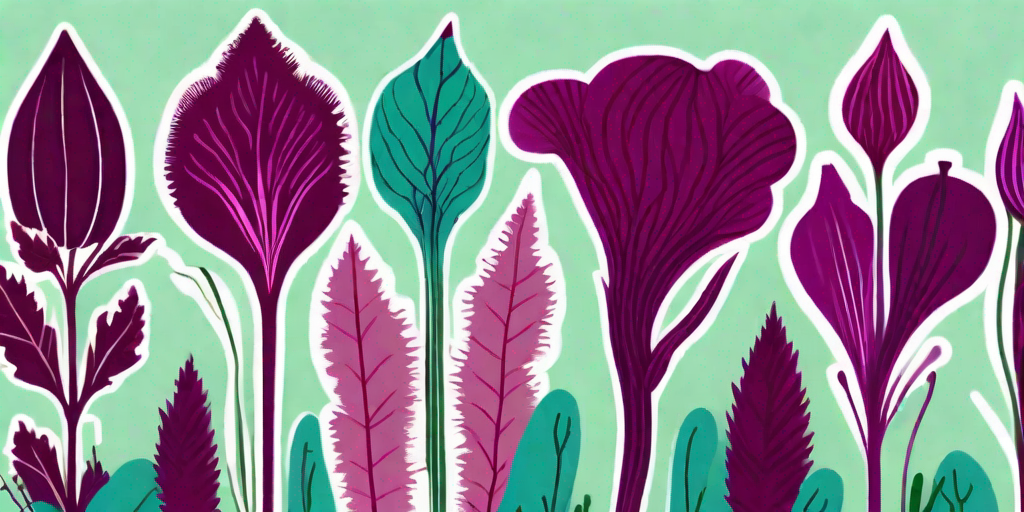
Beetroot, that humble, earthy vegetable, often relegated to the side of the plate, is finally having its moment in the sun. And it's about time! With a spectrum of colors that would make a rainbow blush, and a variety of shapes and sizes that could rival a high-end fashion show, beetroot is the supermodel of the vegetable world. But it's not just a pretty face. This root vegetable is packed full of nutrients and has a sweet, earthy flavor that can be a real game changer in the kitchen. So, let's dive into the colorful world of beetroot varieties and discover what makes each one unique.
The Beetroot Rainbow
When most people think of beetroot, they picture the classic deep purple variety. But beetroot comes in a dazzling array of colors, each with its own unique flavor profile and nutritional benefits. Let's take a stroll down the beetroot catwalk and meet some of the stars of the show.
First up, we have the classic 'Boltardy', the Audrey Hepburn of beetroots. With its deep, rich purple color and sweet, earthy flavor, it's a timeless classic that never goes out of style. But don't let its traditional appearance fool you. This beetroot is a powerhouse of nutrients, packed full of antioxidants and fiber.
Golden Beetroot
Next up, we have the 'Golden' beetroot, the Marilyn Monroe of the beetroot world. With its vibrant yellow color and sweet, mellow flavor, it's a real head turner. But it's not just a pretty face. Golden beetroot is rich in beta-carotene, which is great for your skin and eyes.
Then there's the 'Candy Stripe' or 'Chioggia' beetroot, the Cindy Crawford of beetroots. With its striking red and white striped flesh, it's a real show stopper. But it's not just about looks. This beetroot has a sweet, peppery flavor that adds a real kick to any dish.
White Beetroot
And let's not forget the 'Albino' beetroot, the Gwyneth Paltrow of beetroots. With its crisp white flesh and subtle, refined flavor, it's the epitome of understated elegance. But don't be fooled by its delicate appearance. This beetroot is a nutritional powerhouse, packed full of fiber and vitamin C.
How to Grow Your Own Beetroot
Now that we've met some of the stars of the beetroot world, you might be wondering how you can grow your own. Well, you're in luck! Beetroot is one of the easiest vegetables to grow, and with a few simple tips, you can have a colorful harvest of your own.
First, choose your beetroot variety. Whether you're a fan of the classic 'Boltardy', the vibrant 'Golden', the striking 'Candy Stripe', or the elegant 'Albino', there's a beetroot for every taste and every garden.
Planting and Care
Next, prepare your soil. Beetroot prefers well-drained soil with a pH between 6.0 and 7.0. Add some compost or well-rotted manure to give your beetroot a nutrient boost.
Then, sow your beetroot seeds directly into the soil, about 1cm deep and 10cm apart. Beetroot doesn't like to be transplanted, so it's best to sow the seeds where you want them to grow.
Keep the soil moist, but not waterlogged, and your beetroot seeds should germinate within 10 to 14 days. Once the seedlings are about 5cm tall, thin them out to about 10cm apart to give them room to grow.
Harvesting and Storage
Harvest your beetroot when they're about the size of a golf ball for the best flavor and texture. You can leave them in the ground longer if you prefer larger beets, but they may become woody.
After harvesting, you can store your beetroot in a cool, dark place for several months. Just remember to twist off the leaves and store them separately, as they can draw moisture away from the beetroot.
FAQs
Can I eat beetroot leaves?
Yes, beetroot leaves are edible and packed full of nutrients. They have a similar taste to spinach and can be used in the same way.
Why is my beetroot not forming bulbs?
This could be due to a number of factors, including overcrowding, poor soil fertility, or irregular watering. Make sure your beetroot has enough space to grow, and keep the soil consistently moist.
Can I grow beetroot in containers?
Yes, beetroot can be grown in containers. Just make sure the container is deep enough for the beetroot to form bulbs, and has good drainage.
Conclusion
So there you have it, a whirlwind tour of the colorful world of beetroot varieties. From the classic 'Boltardy' to the vibrant 'Golden', the striking 'Candy Stripe', and the elegant 'Albino', there's a beetroot for every taste and every garden.
So why not give beetroot a go in your garden this year? With its dazzling array of colors, sweet, earthy flavor, and nutritional benefits, it's a vegetable that deserves a spot on your plate and in your garden.











